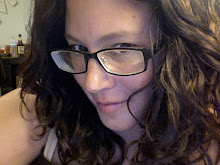


The Tate has issued an edict, that while elegantly, smartly argued...is nonetheless clad in a bit of ridiculousness for it's "ruleness."
Altermodern
Manifesto
POSTMODERNISM IS DEAD
A new modernity is emerging, reconfigured to an age of globalisation – understood in its economic, political and cultural aspects: an altermodern culture
Increased communication, travel and migration are affecting the way we live
Our daily lives consist of journeys in a chaotic and teeming universe
Multiculturalism and identity is being overtaken by creolisation: Artists are now starting from a globalised state of culture
This new universalism is based on translations, subtitling and generalised dubbing
Today’s art explores the bonds that text and image, time and space, weave between themselves
Artists are responding to a new globalised perception. They traverse a cultural landscape saturated with signs and create new pathways between multiple formats of expression and communication.
The Tate Triennial 2009 at Tate Britain presents a collective discussion around this premise that postmodernism is coming to an end, and we are experiencing the emergence of a global altermodernity.
Nicolas Bourriaud
Altermodern – Tate Triennial 2009
at Tate Britain
4 February – 26 April 2009

1 comment:
Question: (Ayşe Tener - Cumhuriyet ) What do we expect from the concept of curator in the world. Would you tell us something about that?
Reply: We can say that, he is a person who establishes his/her perceiving circle, art perceiving circle starting with his /her own culture. At the same time he/she will also function in the text or exhibition medias to transfer his/her vision of the world, and also to be engaged in the world. To defend that artist instead of this artist is an engagement. As it means most likely that you defend other values by leaving aside some others. I mean basically, it's very ordinary, banal. At the same time this has something to do with being a D.J. When you make an exhibition you try to put these (works of art) together, side by side aiming to produce a meaning. This existence, side by side is also highly important, because what will happen in a museum or gallery when you look at it in a very shallow way? There are some people; they have relations between themselves, and they also have other relations with an object apart from these relations between them. I mean, in this manner; there are objects and humans in a space, in other words, there are forms of people. I mean there are forms and people. The art itself is the history of all these, the history of the relation of all these and the history of the struggle of how to settle down, how to create stories among all these, setting out with these forms. For example, we can handle the word 'curator' in a different way and we say that, for example there are people who serve the ball very well in tennis, and there are also people who receive these services very well. In my opinion artists serve the ball, and I try to throw back the ball they have thrown at me.
Post a Comment